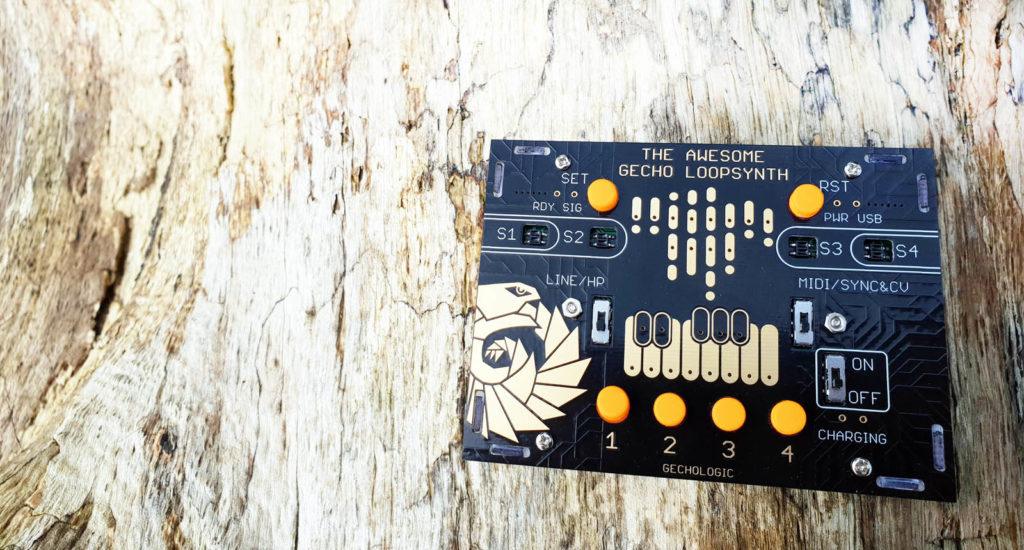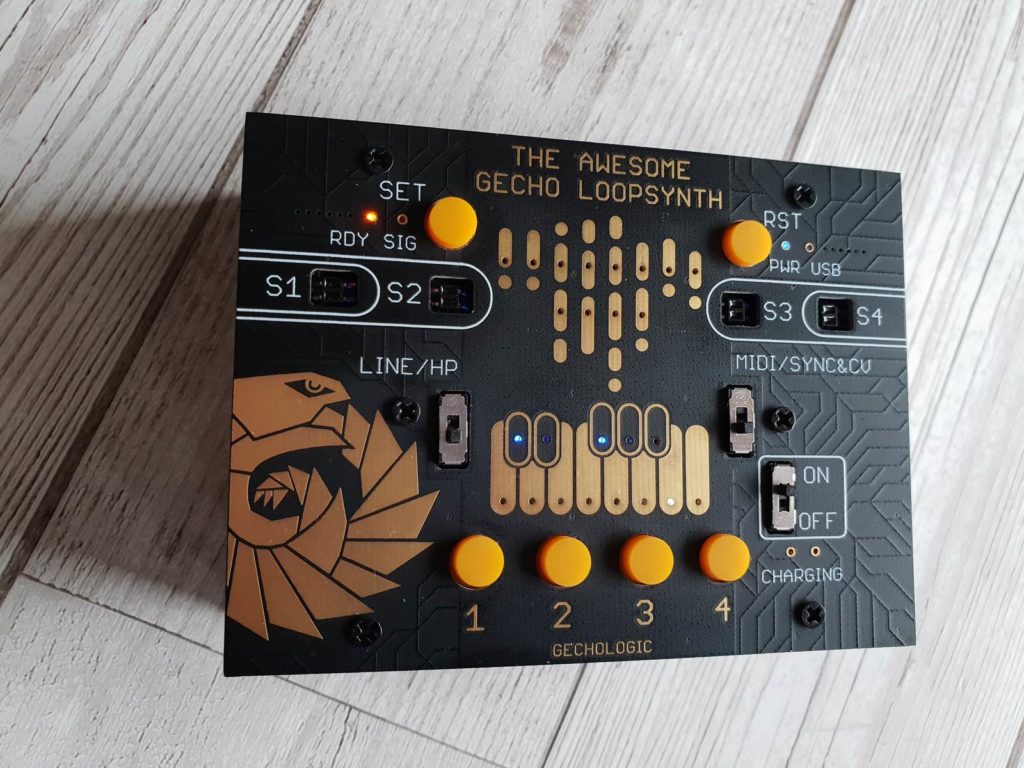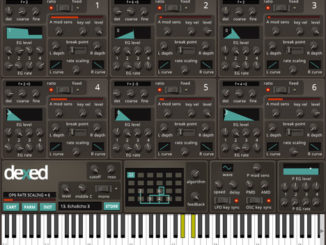Gecho Loopsynth v2 is the second version and can do everything the previous one did plus more advanced sound engines including the MI Clouds, MIDI In/Out and more.
In 2016, Gechologic collected almost 50.000€ on Kickstarter to finance the development of the open-source Synthesizer Gecho Loopsynth. It was such a big success that it was sold out for a long time and difficult to get a unit. So it’s no wonder that Gechologic has been working on a successor in recent months. The development seems to be in the final stages and v2 is about to be released.
Visually, Gecho Loopsynth v2 has changed: the unit is a bit larger but thinner and has now a front panel instead of an acrylic plate. Internally, a lot has been improved but without changing what Gecho made to succeed. It features now a stronger CPU and more memory under the hood that gives the developers more coding possibilities. That has the consequence: a better operating with over 50kHz sampling rate with the same delay echo buffer lengths as in v1, more polyphony as well as more connection options: MIDI In/Out and bi-direction CV’s and gate triggers.
On the code side, the new model can do everything that Gecho v1 did, plus MIDI In/Out, plus what the super unique Glo the Polyphonic Whale Synthesizer can do (with differently mapped controls). Besides Glo, there are some new sound engines inside including the stunning open-source Mutable Instruments Clouds granular code and Dekrispator.
Further, the flash memory has been upgraded from 1MB to 8MB, the electret/condenser microphones (left/right) have been replaced with better MEMS and the CV inputs will accept now up to 10V. With the more internal Gecho is still playable with a mini keyboard and the programs can be changed via the different buttons.
More Changes
- The buttons were moved a bit, so they are not too close together
- There is a proper Line-out signal available via one of the HP connector, with a switch to select function, also there are soldering pads for fully differential Line-out
- The input that used to be called “piezo/line-in” doesn’t need to use additional analog OpAmp chip as a pre-amp anymore (the codec chip contains all required analog circuitry) and has wider range in terms of controlling input gain, from passive guitar pickup to Line levels
- There is charging circuit on board, that can handle Li-Po and Li-Ion cells
- Mini-USB connector has been swapped for Micro-USB, and uses faster driver now. USB-C was just too complex to fit as it has many more signals that need taking care of
- Magnetic sensor has been replaced with accelerometer, it does not have full 9 DOF with gyro sensing, only reacts to tilt but is sufficient for what it needs to control
- There is still a magnetic sensor somewhere in ESP32 bound to one of the ADC channels but I haven’t tested it yet, will leave this to those of you who want to hack it 🙂
- A Micro-SD card slot was added, it is wired via fast 4-bit bus to a SDMMC controller and works at about 2MByte/sec r/w with cheapo SD cards from eBay. It might be useful for expanding samples memory and the throughput should also be sufficient for storing the generated track in real time, but that hasn’t been tested yet
- Electret/condenser microphones have been replaced with MEMS, and are routed with differential signals, which lowers the noise/interference. They are slightly more sensitive too
- All units will have MIDI, there is a switch to select in vs. out over one 3,5mm Jack which is also shared with two Sync and CV signals (both directions). There was not enough space to fit one more connector, and you usually don’t need everything at once anyway; however in realms of DIY, there are separate soldering pads for MIDI in and out if you want to expand to all 3 connectors
- The standard powering scheme still accepts 3 or 4 AA/AAA batteries (also Ni-Cd, Ni-MH or Ni-Zn rechargeables), while built-in rechargeable cells will be optional & easy to add. Disposable cells still make sense if you mostly use the synth plugged into the 5V USB source, and need them as a backup when you go outside where there are no sockets
- The CV inputs via 3.5mm Jack will safely accept up to 10V, but they can only emit up to 3.3V as that’s the power level Gecho is operating on. I don’t know yet how precise these outputs are, as the testing hasn’t been completed
- In sync mode, similarly the output can only go up to 3.3V which is usually sufficient for 5V powered devices too (or those powered with 9V but operating on 5V internally), this is still being tested
- The extra soldering pads to override what the IR sensors do are still present, they can be used as 4 more CV voltages (within the 0-3.3V range), but this is very experimental, you would need to modify the firmware. I believe with MIDI now present it makes more sense to override sensors programmatically using CC messages.
Gecho Loopsynth v2 is available now for pre-order for 159€ (assembled version, box is optional), DIY kits from 79€ and 89€ for the brand new acrylic sandwich version. Shipping starts in August/September 2019.
More information here: Gechologic






Be the first to comment